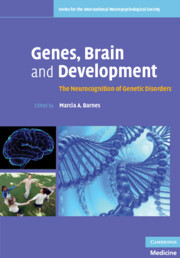Book contents
- Frontmatter
- Contents
- List of Contributors
- Preface
- Acknowledgments
- Section 1 Connecting genes, brain, and behavior in neurodevelopmental disorders
- Section 2 Genetic disorders and models of neurocognitive development
- 4 Language and communication in autism spectrum disorders
- 5 Language development in children with Williams syndrome: New insights from cross-linguistic research
- 6 Language in Down syndrome: A life-span perspective
- 7 Genetic disorders as models of mathematics learning disability: Fragile X and Turner syndromes
- 8 A developmental approach to genetic disorders
- 9 The use of strategies in embedded figures: Tasks by boys with and without organic mild mental retardation: A review and some experimental evidence
- Index
- References
6 - Language in Down syndrome: A life-span perspective
Published online by Cambridge University Press: 04 August 2010
- Frontmatter
- Contents
- List of Contributors
- Preface
- Acknowledgments
- Section 1 Connecting genes, brain, and behavior in neurodevelopmental disorders
- Section 2 Genetic disorders and models of neurocognitive development
- 4 Language and communication in autism spectrum disorders
- 5 Language development in children with Williams syndrome: New insights from cross-linguistic research
- 6 Language in Down syndrome: A life-span perspective
- 7 Genetic disorders as models of mathematics learning disability: Fragile X and Turner syndromes
- 8 A developmental approach to genetic disorders
- 9 The use of strategies in embedded figures: Tasks by boys with and without organic mild mental retardation: A review and some experimental evidence
- Index
- References
Summary
Down syndrome (DS), or trisomy 21, is divided according to three etiological subcategories: (1) standard trisomy, (2) mosaicism, and (3) translocation. In 97% of all cases (the standard trisomy 21 subcategory), the genetic error takes place in the ovula or the spermatozoid before syngamy or during the first cell division. All the living cells of the embryo receive three chromosome 21s. In 1% of all cases (Hamerton et al., 1965; 2% according to Richards, 1969; the mosaicism subcatregory), the genetic error takes place during the second or the third cell division. In those cases, the embryo develops with a mosaic of normal cells containing the regular number of 46 chromosomes and cells with three chromosome 21s. In the remaining 2% (1%, according to Richards) of all cases (the translocation subcategory), the additional chromosomic material is not a triplicate of chromosome 21 but a part or the totality of another chromosome (often chromosome 14 or 22). In about 66% of the translocation cases, the genetic error takes place during the formation of the ovula or the spermatozoid, or during the first division of the embryo cell. In 34% of the cases, one of the parents, although phenotypically normal in all respects, carries the translocation in his/her genotype.
- Type
- Chapter
- Information
- Genes, Brain and DevelopmentThe Neurocognition of Genetic Disorders, pp. 122 - 142Publisher: Cambridge University PressPrint publication year: 2010
References
- 2
- Cited by

